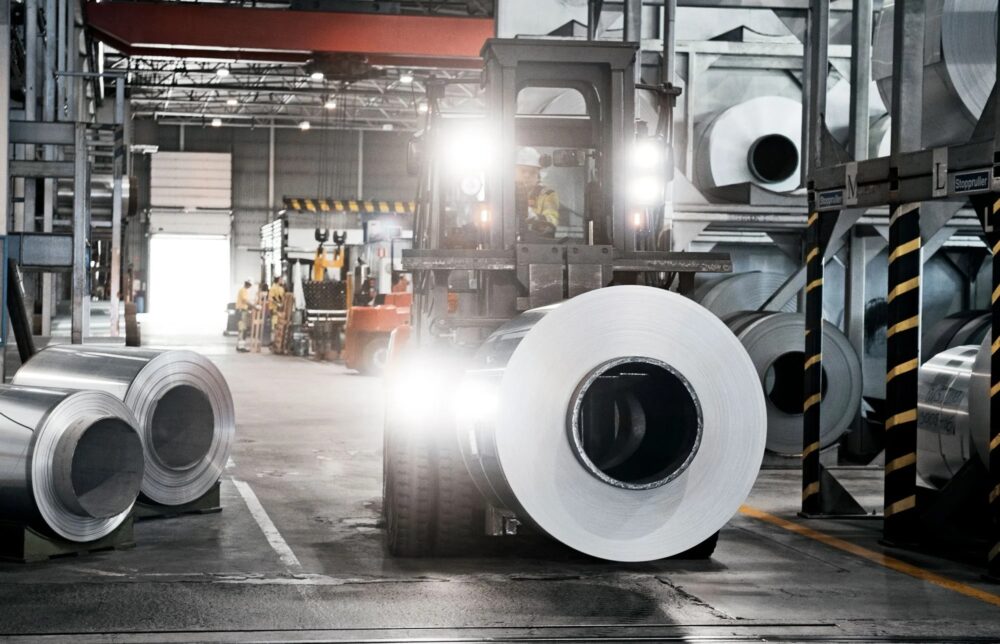The US and the EU are preparing to put tariffs on Chinese aluminum and steel

To counter Chinese industry, the United States and the European Union plan to impose tariffs on imports of the most polluting steel and aluminum. Will free trade give way to climate protectionism?
The United States and the European Union are considering imposing tariffs on steel and aluminum produced in China based on their CO2 emissions.
CHANGE OF PURPOSE OF USE?
The news, reported exclusively by Bloomberg , is significant because it seems to tell of a change in the purpose of using duties, a tool usually used in trade disputes but which instead Washington and Brussels also want to exploit to implement their climate agendas.
The steel industry alone is worth 7-9 percent of global carbon dioxide emissions.
WHERE THE IDEA OF DUTIES COMES FROM
The idea of tariffs against Chinese aluminum and steel producers – accused not only of polluting a lot, actually, but also of flooding the market with excessive quantities that hurt American and European companies – was formulated by the administration of President Joe Biden. However, it has not yet been fully developed or formally proposed.
A Bloomberg source said the United States was unlikely to reach an agreement on the matter with European authorities before the end of 2023.
THE US-EU AGREEMENT ON STEEL AND ALUMINUM
The regulatory framework underpinning the proposed tariffs is the Steel and Aluminum Trade Agreement reached by the United States and the European Union in November 2021.
In fact, that agreement, in addition to resolving the commercial tensions between the two blocs opened by ex-president Donald Trump, also led to the establishment of an international coordination for the contrast of the most emissive steel production: that is to say, in practice, that Chinese.
Beijing is clearly the largest producer of steel and aluminum in the world, with a share of about 60 and 57 percent respectively of the global total, as well as the nation responsible for the largest amount of greenhouse gas emissions.
ENLARGE THE AGREEMENT
It seems that other countries also want to join the discussions between the United States and the European Union on the "clean" trade of aluminum and steel, but they will probably be excluded, at least initially. As a result, it is likely that not only imports from China, but also from Japan, for example, are at risk of being burdened by tariffs.
Washington's goal, however, seems to be to extend the agreement on steel and aluminum to other partner nations, provided they respect the conditions on production and emissions.
EUROPEAN SKEPTICISM
US Trade Representative Katherine Tai presented the tariff proposal to European Trade Commissioner Valdis Dombrovskis in late October. Bloomberg sources noted some skepticism in Brussels on a number of technical issues, such as the compatibility of the tariffs with World Trade Organization rules and with the functioning of the European carbon pricing mechanism.
In the last two years, the price of CO2 for European industries has almost tripled, settling at 80 euros per ton. Last March, the European Council approved the CBAM, the Community mechanism for the imposition of duties on carbon-intensive goods – such as steel, aluminium, cement or fertilizers – coming from non-European countries which have not adopted stringent for the climate.
To ensure legal coverage for the (possible) new tariffs, the Biden administration is thinking of converting the commercial investigation that served Trump to impose tariffs on European steel and aluminum into a new investigation focused this time on CO2 emissions and on overproduction.
“GREEN PROTECTIONISM”
Clara Ferreira Marques, columnist for Bloomberg , spoke of the plans of Washington and Brussels as an example of "green protectionism", i.e. linked to the objectives of reducing emissions.
America and Europe, writes the analyst, “seem to put political concerns first at the expense of the principles of free trade. By explicitly turning against China – not the only culprit – they risk jeopardizing even the small progress made with Beijing and increasing tensions already on the rise".
Ferreira wonders if the tariffs will provide exemptions for Chinese industrial production that uses hydroelectric and non-fossil energy. And he thinks that "worst of all" is "the mix of protectionism and climate, a toxic combination in which national priorities can get in the way of solving a global problem".
THE (OPPOSITE) VISION OF CROSETTO
About a year ago, before he was appointed defense minister, Guido Crosetto supported the need for duties on imports of products with high greenhouse gas emissions and a "protectionism towards those who are not green" to protect strategic Italian industries and European countries from climatically unfair competition.
Read also: Aluminum, why are the US and the EU hesitating on sanctions against Russia?
This is a machine translation from Italian language of a post published on Start Magazine at the URL https://www.startmag.it/economia/usa-ue-dazi-alluminio-acciaio-cina/ on Mon, 12 Dec 2022 09:47:06 +0000.
